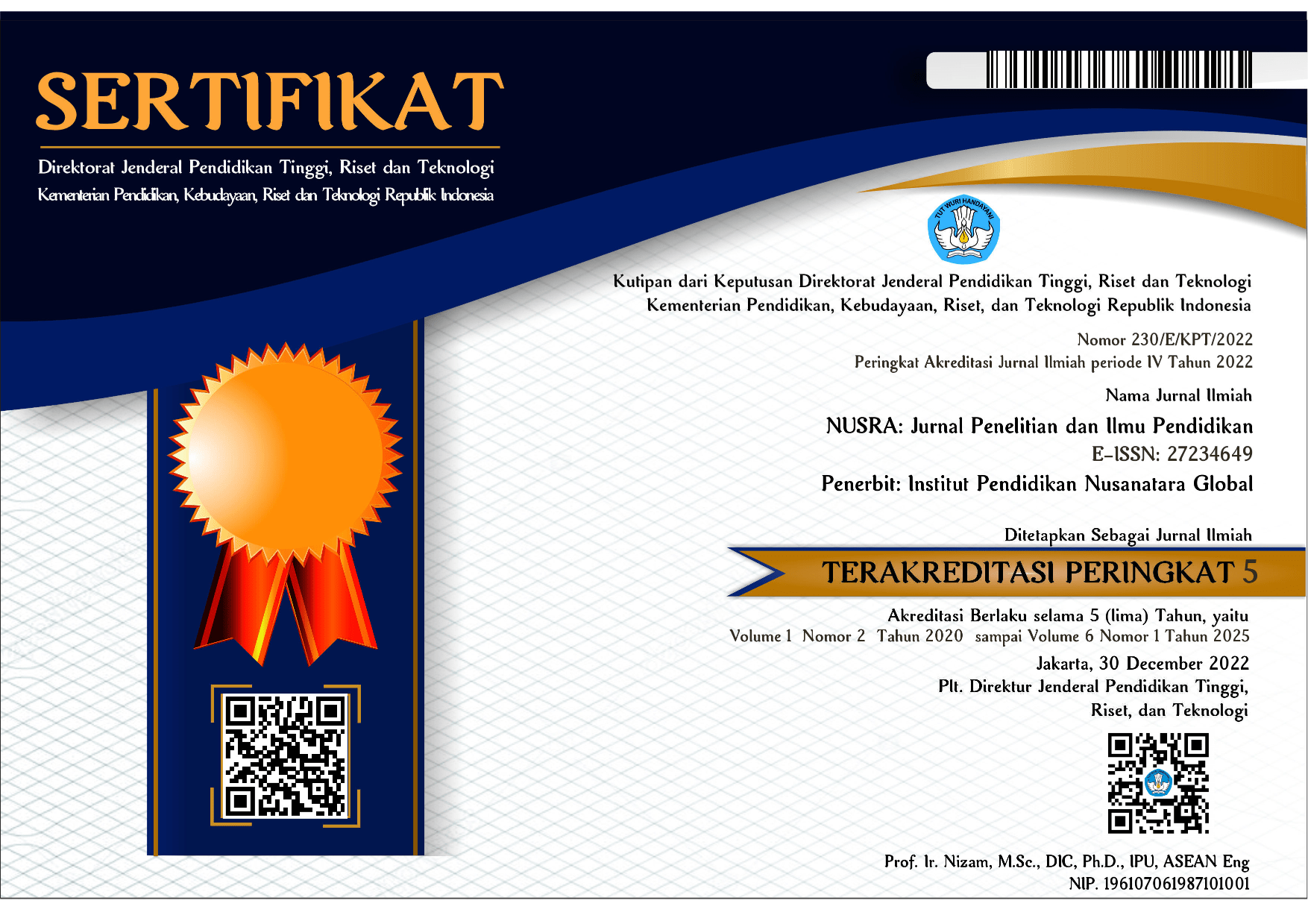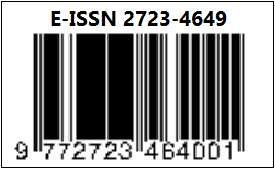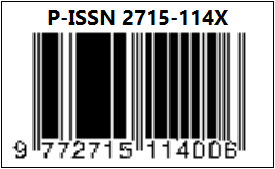ANALISIS KELAYAKAN PENGEMBANGAN E-HANDOUT BERBASIS PBL SEBAGAI SELF REGULATED LEARNING PADA MATERI VEKTOR
DOI:
https://doi.org/10.55681/nusra.v4i4.1764Keywords:
E-Handout, Problem Based Learning, Self-Regulated LearningAbstract
The current curriculum emphasizes the use of technology in the learning process. Advances in science and technology have had a significant impact on the implementation of education. e-handout is a summary of learning material presented online which can help teachers and make it easier to deliver learning material so that learning objectives can be achieved as formulated. The aim of this research is to see the feasibility of developing PBL-based e-handouts with self-regulated learning on vector topics. This research is development research using the ADDIE model. The instrument used in this research is a questionnaire, namely a questionnaire to test the validity of material experts, language experts, and design experts. Based on the research results, it shows that material expert validation obtained an average of 91% with very feasible criteria, language expert validation obtained an average of 87.78% with very feasible criteria and based on the results of design expert validation obtained an average of 91.56% with very feasible criteria. . Thus, the development of PBL-based e-handouts with self-regulated learning on vector material has very good quality and is ready to be implemented more widely.
Downloads
References
Adam S, Syastra MT. (2015). Pemanfaatan Media Pembelajaran Berbasis Teknologi Informasi Bagi Siswa Kelas X Sma Ananda Batam | Computer Based Information System Journal. CBIS J. ;3(2):1–1
Afrilia TI, Ratnawuri T. (2020). Pengembangan Media Pembelajaran Handout Berbasis Mind Mapping Pada Mata Pelajaran Ekonomi Kelas X Ips Ma Daarul Ma ’ Arif Natar.;1(1):89–99
Donaviza, M. F., & Eliyasni, R. (2021). Peningkatan Hasil Belajar Siswa pada Pembelajaran Tematik Terpadu dengan Model Problem Based Learning di Kelas V Sekolah Dasar. Jurnal Pendidikan Tambusai.
Hadi, M. S., & Izzah, L. (2018). Problem based learning (PBL) in teaching English for students of primary school teacher education department. English Language in Focus (ELIF).
Nantha, C., Pimdee, P., & Sitthiworachart, J. (2022). evaluation of classes using traditional methods, problem-based learning, and flipped learning to enhance Thai student-teacher problem-solving skills and academic Technologies in Learning
Nur, B. N. (2018). Penerapan Model Pembelajaran Problem Based Learning (Pbl) untuk Meningkatkan Hasil Belajar Geografi Kelas XI IPS 1 SMA Negeri 12 Makassar.
Nurfadhillah S, Ningsih DA, Ramadhania PR, Sifa UN, (2021). Peranan Media Pembelajaran Dalam. J Pendidik Ilmu Sos.;3(2):243–55
Suwarno M. (2017). Potensi Youtube Sebagai Sumber Belajar Matematika. Pi Math Educ J.;1(1):1–7
Ulger, K. (2018). The effect of problem-based learning on the creative thinking and critical thinking disposition of students in visual arts education. Interdisciplinary Journal of Problem-Based Learning.
Velly, D. (2021). Increasing the motivation and learning outcomes of students through the application of the problem based learning model in learning physics. In Journal of Science and Science Education. scholar.archive.org.
Downloads
Published
How to Cite
Issue
Section
License
Copyright (c) 2023 NUSRA: Jurnal Penelitian dan Ilmu Pendidikan

This work is licensed under a Creative Commons Attribution-ShareAlike 4.0 International License.














